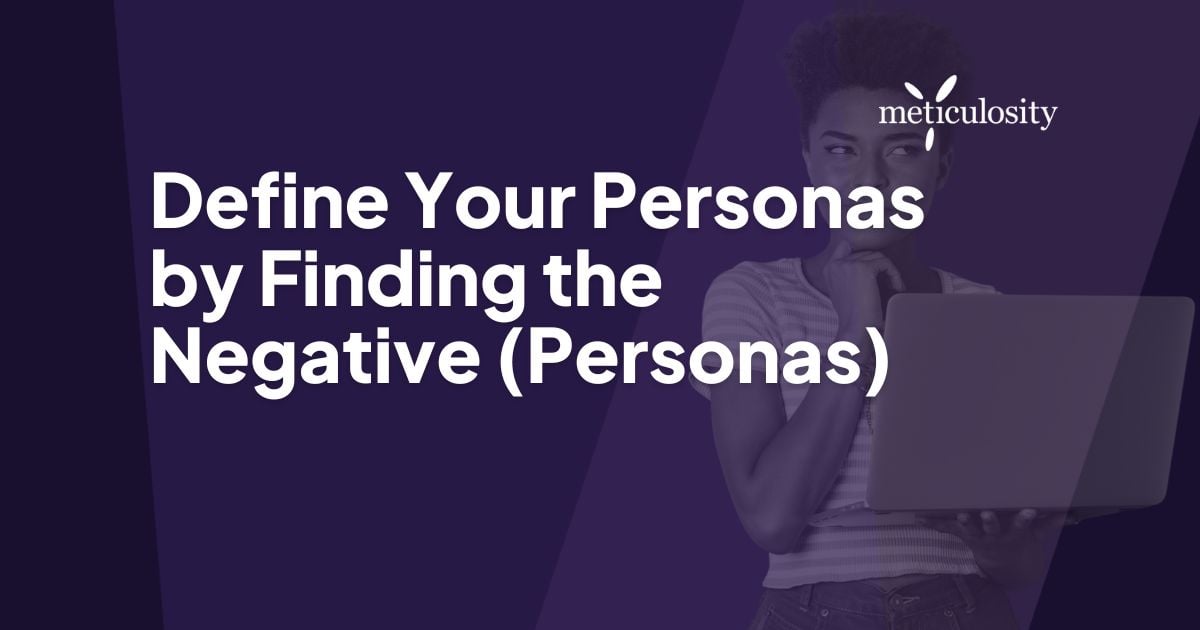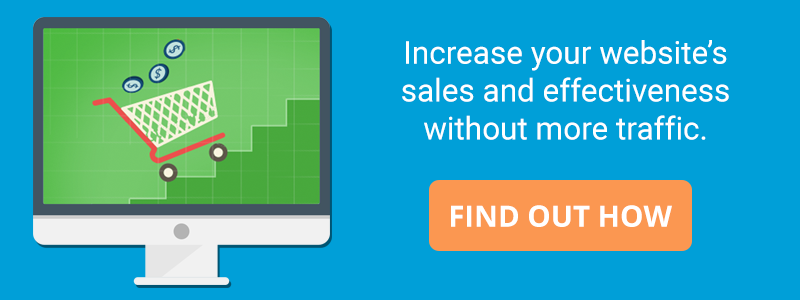In our line of work, we often talk about buyer personas – profiles we’ve created of our most dedicated customers who understand and cherish our values. The more we understand these profiles the more we can become perfectly targeted to their needs. But what about the opposite kind of customer? There’s always that one person who might be highly engaged with every slither of content you publish but just doesn’t make a purchase and the amount you invest may never change this. For whatever reason, they just aren’t going to commit.
There’s always that one person who might be highly engaged with every slither of content you publish but just doesn’t make a purchase and the amount you invest may never change this. For whatever reason, they just aren’t going to commit.
So, what can you do to avoid investment in a prospect that leads nowhere? The answer lies in negative buyer personas (sometimes called exclusionary personas).
What are Negative Buyer Personas?
Much like buyer personas, negative buyer personas are also semi-fictional representations of your customers based on evidence you gather.
They can tell you important things about the demographics, habits, and behaviors of prospects who either will never make a purchase, or who make an investment so low that the amount you’re spending on acquiring them isn’t worth it. In essence, these profiles help you create representations of customers you don’t want to sell or market to for whatever reason.
Why Look for the Negative?

A key advantage to these personas is that you can save time and money. Don’t think about it as losing potential customers, but as fine tuning your understanding of the prospects with true potential to offer a return of investment. With negative buyer personas, you’ll also be able to:
- Segment out potential prospects that are likely to drain resources
- Free up resources to focus on prospects that will lead to purchases
- Avoid wasting precious marketing budget on advertising to the wrong people
Creating negative personas is as simple as creating basic buyer personas.
Step One: Do Your Research
It’s important to base these personas on evidence, so spending time talking to your own team and customers is important. Using your sales and marketing team, you can gather together an understanding on the type of people who hang around your content but don’t use your service. Interviewing your customers (whether this is direct, by approaching those who choose not to use a service, or through monitoring behaviors online) will also lead to a more accurate profile. Consider targeting clients who didn’t spend much as well as those who never make a purchase.
Step Two: Build Your Negative Profiles
HubSpot has great resources available for you to create personas and you can use templates to also create your negative personas. Remember that on top of what we’ve already covered, your personas can also include those meeting certain criteria – such as geographic location or inability to use your product/service - that you know means you don’t want to market to them.
Step Three: Tag & Track Your Negative Profiles
If you’re using forms on your site you can tag your negative personas, just as you would tag your target buyer personas. Having a buyer persona for your negative personas allows you to keep tabs on those who engage with your brand, but might not be ready for your products or services. Setting up workflows and alerts for certain triggers can also help you to identify when that contact may be switching from a negative persona to a positive one.
Step Four: Implement
Just because these personas may be unlikely to convert now, or ever, doesn’t mean you need to be rude or exclusionary to them. Negative personas are meant to help you work out where best to spend your money, and which audiences to avoid investing marketing budgets in. Once you’ve implemented use of these personas you can continue to interact with all prospects but with a focus on investing time and resources in those that lead to a return.
Negative Personas in Action
A Moving Company
Often, a person will become a negative persona because they live in a certain area. We have a client who is a moving company and they do not want to do inner-city moves because of the space restrictions for parking their large moving truck in the downtown core. To help quickly identify these negative personas we added a field to their contact form to identify where they live in the city. If they select “Downtown Core”, we automatically know that this is not an ideal client for them. When they hit the Submit button of their form, their kickback email apologizes for our inability to service them at this time and recommends some other great movers who are able to. This creates a strong brand association for the moving company because they are still being helpful even though they can’t take the work, and it saves their sales people a lot of time on these leads that will not progress. Plus, when they’re ready to make a move in the suburbs, you’ll already have an in.
Out of Market
We have an office in the Cayman Islands and are very active in the local marketing community – but we cannot do business with other companies on the island. By tagging our local contacts as Cayman-specific negative personas we can still keep them in our contact list and share our company updates and local events, but we can spare them our sales pitches and US events.
Have any other great examples of how you’re using negative personas to shape your message? Let us know in the comments!








